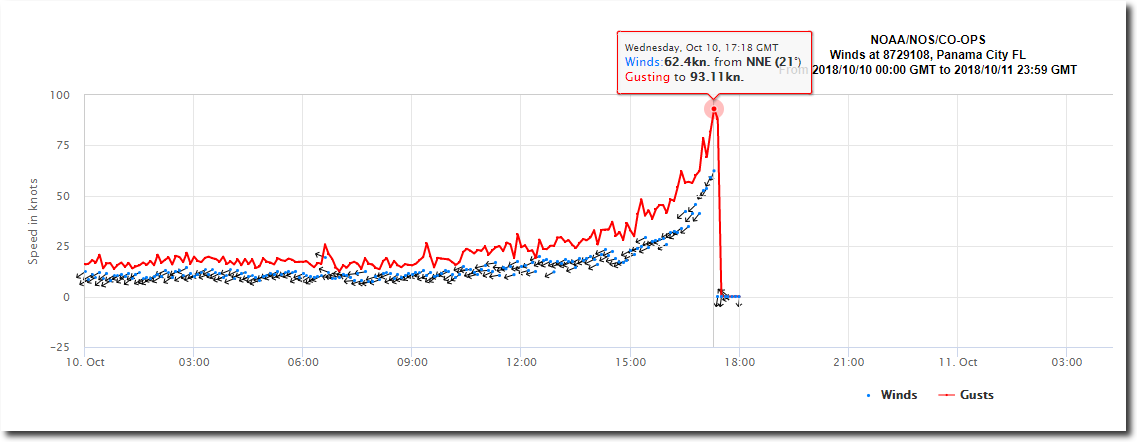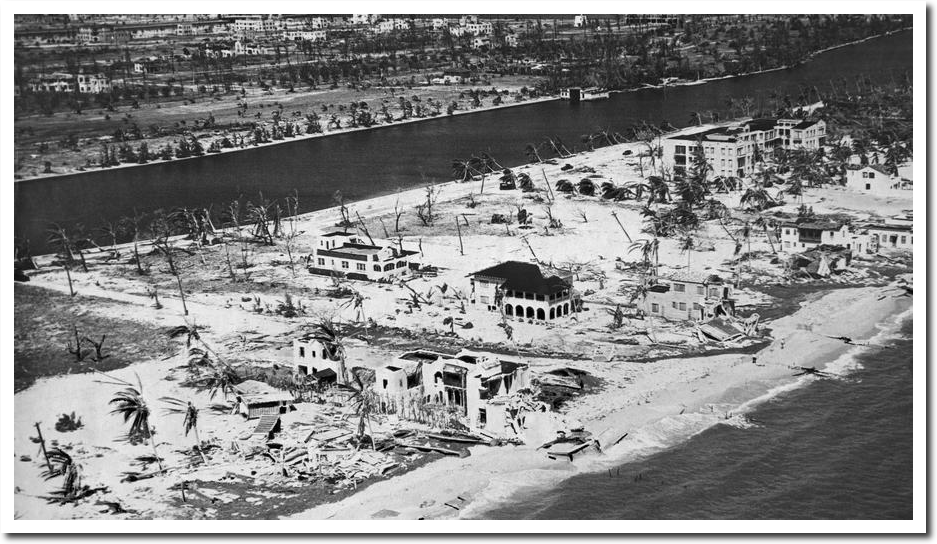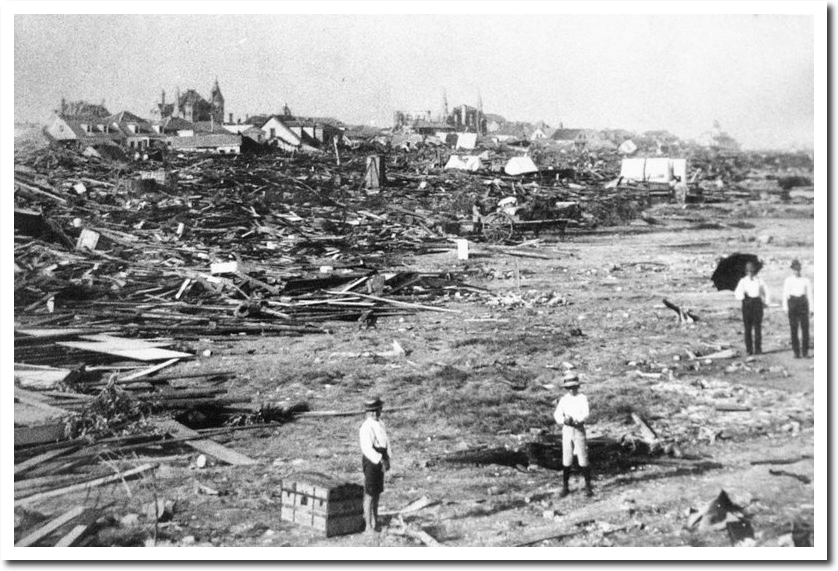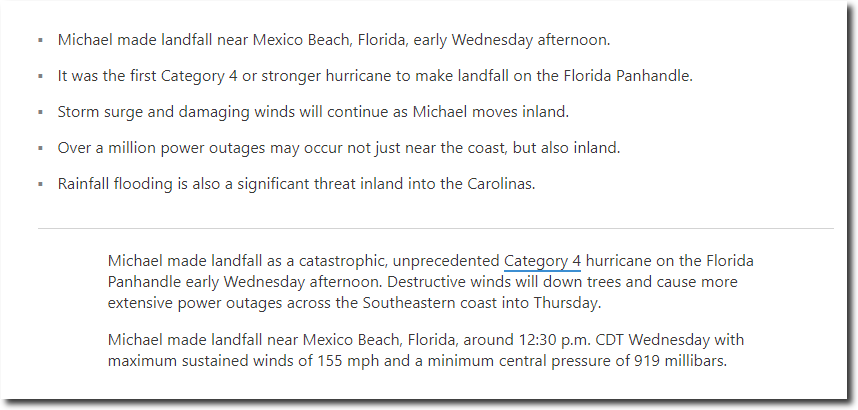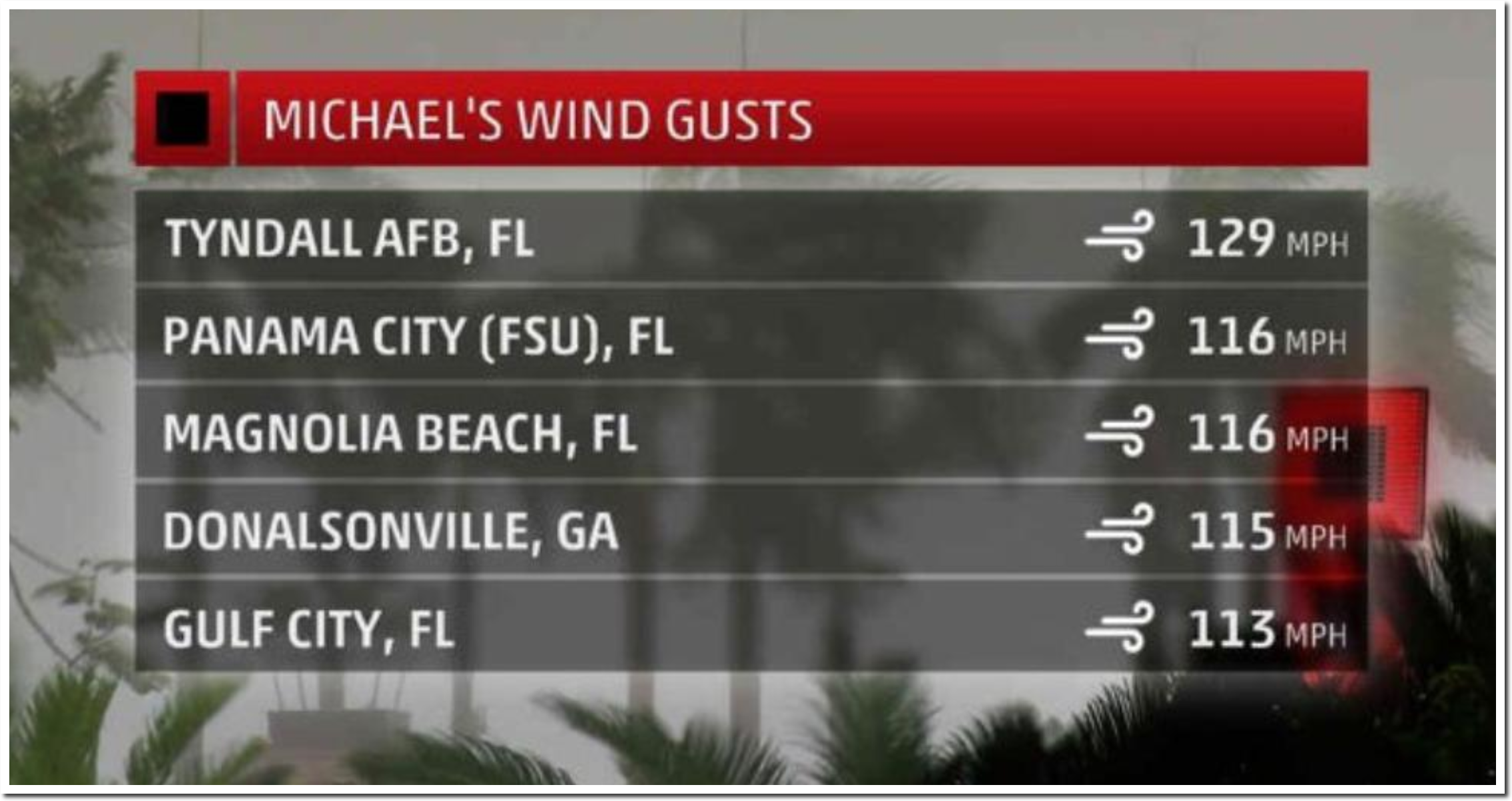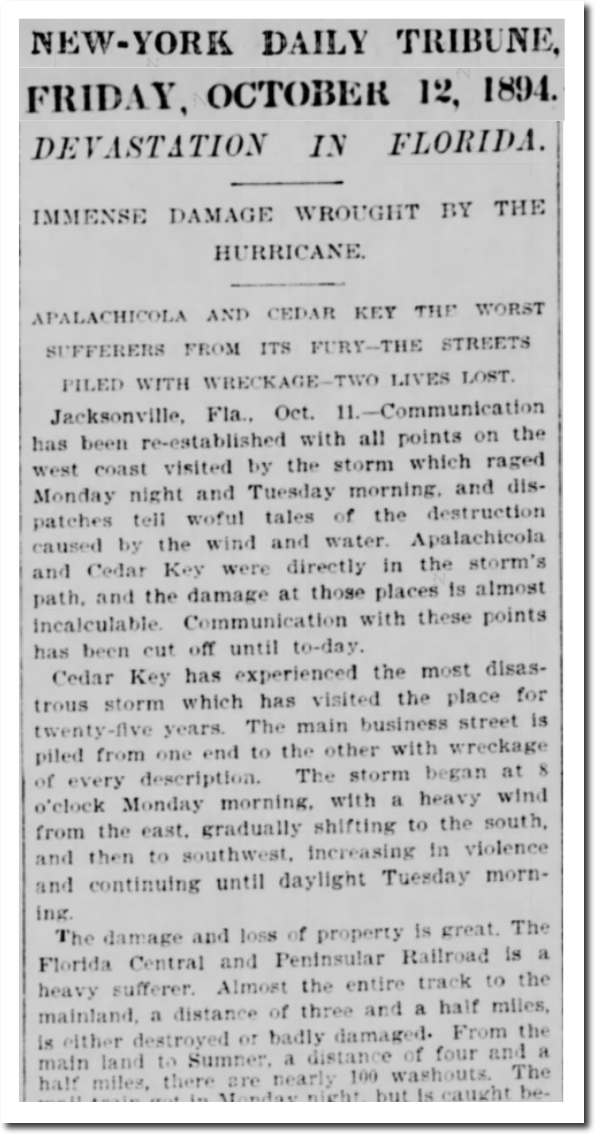A few weeks ago climate scientists said climate change is making hurricanes slow down, stall and rain a lot like Florence. This week they say climate change causes fast moving hurricanes like Michael.
I was watching the storm and the commentary this morning, and long before landfall Michael was officially declared to be a catastrophic category four hurricane (just below category five), the most powerful to ever make landfall “in that region” – and the third most intense in US history after the 1935 Labor Day hurricane and Camille in 1969. It was a genuine pre-hurricane category four propaganda storm.
The NOAA wind gauge at Panama City didn’t back up any of the claims. It showed a peak sustained wind speed of 62 knots before the eyewall arrived, and minimum pressure of 937.5 mb. Neither remotely close to the hype.
Meteorological Observations – NOAA Tides & Currents
The pictures of damage I’ve seen don’t compare to other “officially less intense” hurricanes, like Andrew in 1992.
Or the 1926 Miami hurricane.
Or the 1900 Galveston hurricane.
Weather Channel made these claims – 155 MPH sustained winds and central pressure of 919 mb. which weren’t even in the ball park of what the NOAA instrumentation at Panama City showed.
And then they directly contradicted themselves in the same article, with the image below. There weren’t any category four wind speed gusts, much less sustained winds. I don’t see any evidence from wind reports or damage reports that Michael was a category four storm at landfall.
I also don’t see any evidence that Michael was stronger than numerous other hurricanes which have hit the region.
12 Oct 1894, Page 7 – New-York Tribune at Newspapers.com
I’ve seen this pattern over and over again – fake landfall statistics are made up long before landfall, the press dutifully parrots them, and then the actual data measured at landfall becomes irrelevant. It is same strategy leftists use for everything.

